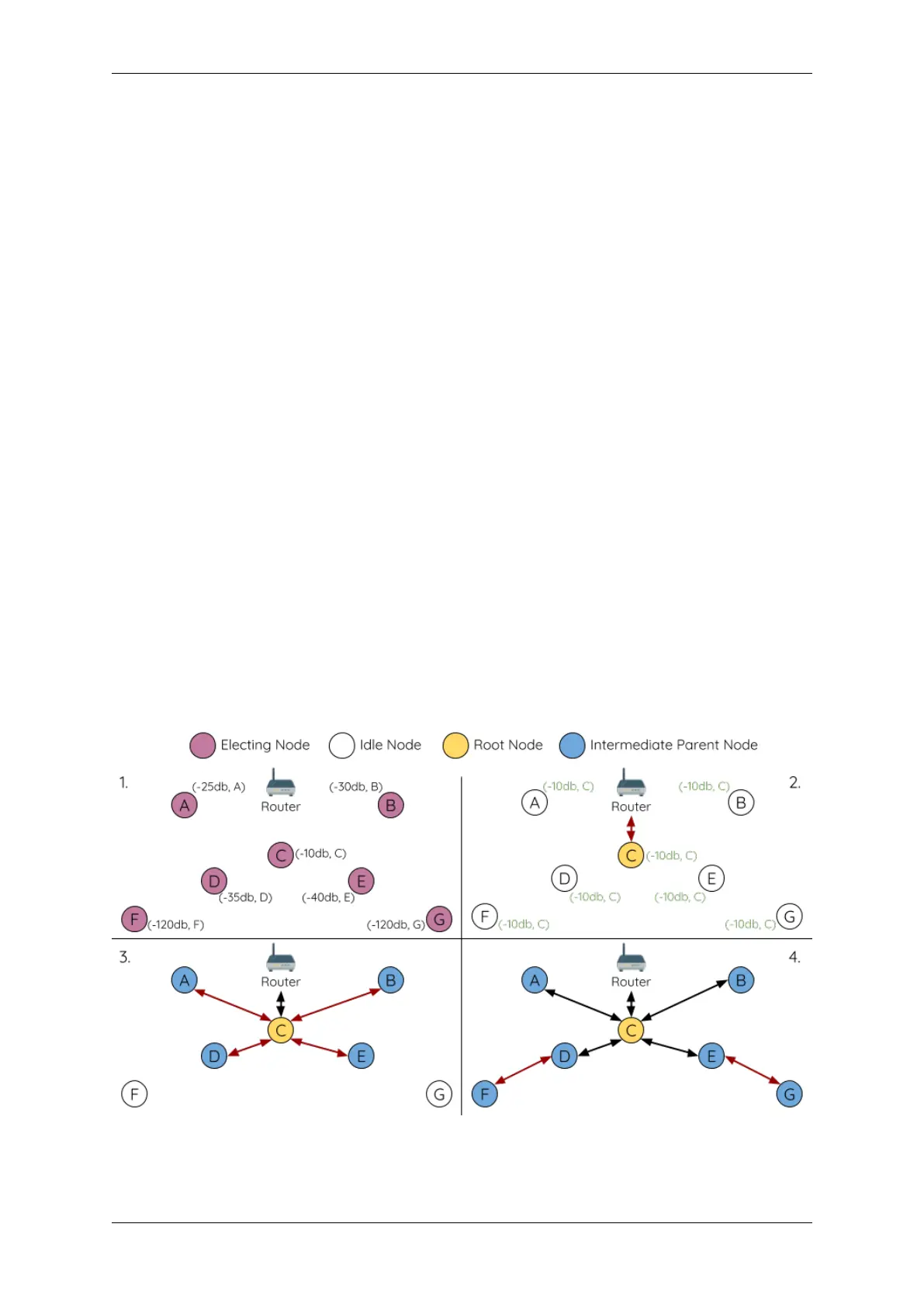Chapter 4. API Guides
3. Formation of remaining layers The remaining idle nodes will connect with intermediate parent nodes within
range thereby forming a new layer in the network. Once connected, the idles nodes become intermediate parent node
or leaf nodes depending on the networks maximum permitted layers. This step is repeated until there are no more idle
nodes within the network or until the maximum permitted layer of the network has been reached. Referring to the
figure above, nodes E/F/G connect with nodes B/C/D respectively and become intermediate parent nodes themselves.
4. Limiting Tree Depth To prevent the network from exceeding the maximum permitted number of layers, nodes
on the maximum layer will automatically become leaf nodes once connected. This prevents any other idle node
from connecting with the leaf node thereby prevent a new layer form forming. However if an idle node has no
other potential parent node, it will remain idle indefinitely. Referring to the figure above, the network’s number of
maximum permitted layers is set to four. Therefore when node H connects, it becomes a leaf node to prevent any
downstream connections from forming.
Automatic Root Node Selection
The automatic selection of a root node involves an election process amongst all idle nodes based on their signal
strengths with the router. Each idle node will transmit their MAC addresses and router RSSI values via Wi-Fi beacon
frames. The MAC address is used to uniquely identify each node in the network whilst the router RSSI is used
to indicate a node’s signal strength with reference to the router.
Each node will then simultaneously scan for the beacon frames from other idle nodes. If a node detects a beacon
frame with a stronger router RSSI, the node will begin transmitting the contents of that beacon frame (i.e. voting for
the node with the stronger router RSSI). The process of transmission and scanning will repeat for a preconfigured
minimum number of iterations (10 iterations by default) and result in the beacon frame with the strongest router RSSI
being propagated throughout the network.
After all iterations, each node will individually check for its vote percentage (number of votes/number of
nodes participating in election) to determine if it should become the root node. If a node has a
vote percentage larger than a preconfigured threshold (90% by default), the node will become a root node.
The following diagram demonstrates how an ESP-WIFI-MESH network is built when the root node is automatically
selected.
Fig. 11: Root Node Election Example
Espressif Systems 1314
Submit Document Feedback
Release v4.4

